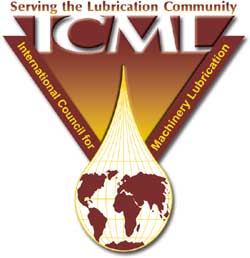Machinery Vibration Analysis Training and CertificationMachinery LubricationTraining and Certification
Previous
Next
Our Training Courses
Since 2014, VibeLube has held public & in-house training courses in two main categories:
- Machinery Vibration Analysis, Category (Level) I, II & III
- Machinery Lubrication, Level I & II
VibeLube is an approved trainer of:
Click on the links below for details of each course:
VA CAT I
VA CAT II
VA CAT III
MLT I
MLT II
VA CAT I
Machinery Vibration Analysis, ISO Cat. I
Vibration Analysis technology has become a key part of successful Rotating Equipment Reliability and Maintenance for the purpose of monitoring machinery health and early detection of equipment defects.
This 4 day course, with an additional half day for review , is the ideal starting place for people entering to the field of vibration analysis, people collecting vibration data, and those who want to grow in vibration based predictive maintenance.
The Vibration Analysis Category I course prepares attendees to perform a range of simple, single channel machinery vibration condition monitoring and diagnostic activities. The workshops and demonstrations scheduled throughout the training course are used to illustrate theory and applications.
This course is in accordance with ISO 18436-2 Requirements for Certification. Individuals meeting the requirements for Category I shall be trained for minimum of 32 hours and qualified to:
1. operate portable instrumentation on pre-assigned or pre-programmed routes,
2. acquire readings from permanently installed instrumentation,
3. input results into a database and download routes from a computer,
4. conduct testing under steady-state operating conditions following predefined procedures,
5. be able to recognize that no signal is present, and
6. be able to compare overall or single value vibration measurements against pre-established alert settings.
For more information click on below link:
Vibration Analysis CAT I
VA CAT II
Machinery Vibration Analysis, ISO Cat. II
This Course is ideal for individuals and technicians to work effectively in vibration diagnosis and predictive maintenance programs
This four day course, with an additional day for review and the certification exam, is the ideal place for people who has entered into vibration measurement of rotating equipment and has gained little experience in collecting vibration data and analysis, and those who want to grow in vibration based predictive maintenance.
This course is in accordance with ISO 18436-2 Requirements for Certification. Individuals certified to Category II are qualified personnel who are certified to perform industrial machinery vibration measurements and basic vibration analysis using single-channel measurements, with or without phase trigger signals, according to established and recognized procedures. Personnel certified to Category II require all the knowledge and skills expected of Category I, and shall also be qualified
a) to select the appropriate machinery vibration measurement technique,
b) to set up instruments for basic resolution of amplitude, frequency and time,
c) to perform basic vibration analysis of machinery and components, such as shafts, bearings, gears, fans,
pumps and motors, using spectrum analysis,
d) to maintain a database of results and trends,
e) to perform basic (single-channel) impact tests to determine natural frequencies,
f) to classify, interpret and evaluate the test results (including acceptance tests) in accordance with
applicable specifications and standards,
g) to recommend minor corrective actions,
h) to understand basic single-plane field balancing concepts, and
i) to be aware of some of the causes and effects of bad measurement data.
For more information click on below link:
Vibration Analysis CAT II
VA CAT III
Machinery Vibration Analysis, ISO Cat. III
This five day course suites those folks who want to take a higher level of vibration analysis practice, either advancing in day to day field works or leading a team of vibration analysts. It is also essential for taking this course if you are running a Reliability and Condition Monitoring Team.
VibeLube is pleased to provide ‘Cat. II vibration Analysts’ a comprehensive and practical training. Once you complete the training, you are eligible to write the exam with confidence, and become a certified Category III Vibration Analyst.
According to ISO 18436-2, individuals certified to Category III are qualified to perform and/or direct and/or establish programs for vibration condition monitoring and diagnostics of machines in accordance with ISO 17359 and ISO 13373-1. Personnel classified to Category III require all the knowledge and skills expected of personnel classified to Category I and Category II, and shall also be qualified
a) to select the appropriate machinery vibration analysis technique,
b) to specify the appropriate vibration instrumentation hardware and software for both portable and permanently installed systems,
c) to measure and perform diagnosis of single-channel frequency spectra, as well as time-domain plots such as waveforms and orbits, under both steady-state and unsteady operating conditions, with or without a phase trigger,
d) to establish vibration monitoring programs, including determination of machines for periodic/continuous monitoring, frequency of testing, route plans,
e) to establish programs for the specification of vibration levels and acceptance criteria for new machinery,
f) to measure and analyze basic operating deflection shapes,
g) to understand and be able to direct the use of alternative condition monitoring technologies (such as acoustic emission, thermography, motor current, and oil analysis),
h) to recommend field corrective actions, such as balancing, alignment, and replacement of machine parts,
i) to be able to use acceleration enveloping (demodulation),
j) to perform basic single-plane field balancing,
k) to report to management regarding program objectives, budgets, cost justification, and personnel development,
l) to prepare reports for appropriate personnel on machine condition, recommend corrective action and report on the effectiveness of repairs, and
m) to provide instructions and technical direction to vibration trainees.
For more information click on below link:
Vibration Analysis CAT III
MLT I
Machinery Lubrication I
Based on the ICML (International Council for Machinery Lubrication) Body of Knowledge for Machinery Lubrication Technician (MLT) and Machinery Lubrication Analyst (MLA), this hands-on course is designed to give you not just the theory but practical tools you can use to help transform your lubrication program.
This course will help you:
-
- Understand how lubricants work, how to create lubricant specifications for different types of machines, and how to manage their condition.
- Learn how to optimize and manage lubrication PM’s.
- Learn how to select oil or grease, the most effective application method, and how to determine the optimum application amount and frequency.
- Learn how to identify, prevent, and remediate lubricant contamination.
- Learn how to design, manage and utilize a world-class lubricant storage, handling and dispensing system.
- Understand the key elements and uses of oil analysis.
- Learn how to modify equipment for lubrication, inspection, oil analysis, and contamination control.
- Learn how to identify gaps in your program and create a game plan for success.
For more information click on below link:
Machinery Lubrication I (MLT I)
MLT II
This hands-on course is in accordance with the ICML (International Council for Machinery Lubrication) Body of Knowledge for Machinery Lubrication Technician Level II (MLT II), to enhance your Lubrication knowledge for implementing advanced lubrication program.
This course will help you:
-
- Understand how lubricants work, how to create lubricant specifications for different types of machines, and how to manage their condition.
- Learn how to optimize and manage lubrication programs.
- Learn how to select oil or grease, the most effective application method, and how to determine the optimum application amount and frequency.
- Learn how to identify, prevent, and remediate lubricant contamination.
- Learn how to design, manage and utilize a world-class lubricant storage, handling and dispensing system.
- Understand the key elements and uses of oil analysis.
- Learn how to modify equipment for lubrication, inspection, oil analysis, and contamination control.
- Learn how to identify gaps in your program and create a game plan for success.
For more information click on below link:
